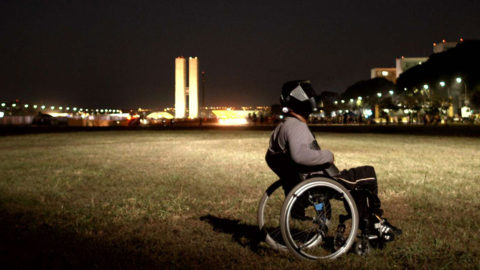ND/NF Interview: Valérie Massadian
Six years ago, Valérie Massadian won the Locarno Film Festival’s best first feature prize for Nana (2011), a revelatory portrait of a four-year-old girl left to her own devices in a cottage in the woods. In her second feature Milla, Massadian fixes her lens onto another liminal stage of femininity, capturing the experience of teenage motherhood with the same elliptical, durational style that made Nana so distinctive.
Milla opens with a dreamlike image: 17-year old Milla (non-actor Séverine Jonckeere, an endearingly unaffected presence) and her boyfriend Leo (Luc Chessel) snuggle together in a car, lit by the gentle glow of foggy windows. In a series of languorous scenes, they set themselves up in an abandoned house by the sea, furnishing their home with scavenged scraps and making feasts out of sandwiches and wine. Massadian’s wide, sunlit compositions render the couple’s meager existence without pathos or pity; she is invested more in the immediacy of their experience than in any abstract forms of social commentary. When tragedy strikes, leaving Milla alone and with child, the film doesn’t dwell upon the circumstances. A brisk and elusive montage suggests a death-by-shipwreck, and then Milla quietly shifts focus to its protagonist’s life as a young, single mother.
Massadian has an affinity for the organic, evident not just in her use of non-actors and natural settings, but also in her approach to cinematic time. The film’s narrative—consisting mostly of long, static scenes—seems to accumulate rather than progress, its steady (and joyful) monotony constantly subverting any expectations of melodrama. At the same time, Massadian interrupts her narrative with ellipses and direct addresses (which includes, in one instance, an extended rock performance in the hallway of a hotel), wilfully bending time into her own poetic vision of reality.
I spoke to Massadian immediately after the New Directors/New Films premiere of Milla at the Museum of Modern Art; it screens on April 1 and 2. We discussed her casting process (which she compares to “falling in love”), the role of poetry and nature in her cinema, and why she can’t watch 90 percent of the films produced these days.
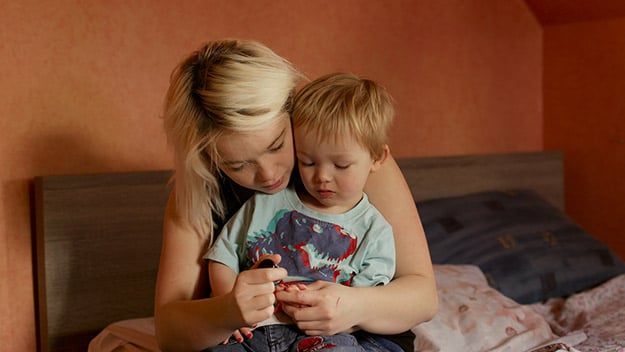
Your first feature Nana centered on a four-year-old girl. Milla applies a similar style and structure to the portrait of a teenage mother. Were they conceived as part of a series?
Milla is actually the third part of the series. It’s probably going to change, but at the time my idea was that I wanted to work with transition ages in girls. So four, which is before they become social, and then 11 to 13, and then teenage motherhood. But I jumped to the third part because I wanted to wait for Kelyna, the girl in Nana, to be 11 to 13 years old.
How did you find and cast Séverine Jonckeere for the role of Milla? She fits your idea of a transition stage beautifully, because she’s a bit babyfaced and young-looking, but also has a jadedness to her.
I just found her. I went up to the north of France and I went to shelters, women’s shelters, teenage shelters… Séverine didn’t live in a shelter, but I distributed flyers everywhere, in the market, in the bakery, everywhere in the town. And then I did a casting and saw 60 girls, and when she walked in, and I knew immediately.
What did you know? What struck you about her?
The fact that she could be really beautiful and very not beautiful at the same time. That she had this milky, baby thing about her, and she could be very childish, but also be a woman. And if you look at the film, if you take each frame, you’ll see that she looks completely different from one shot to the next. Really, not even just because of the passing of time. She just has that face.
But the most important thing was her character. She has kind of a rough character, and I knew that she was going to resist. And because I didn’t want her to act, I wanted her to just be—I can’t ask a non-actor to act, my job is to create a situation and action that will eventually bring what I’m looking for—I knew I could do that with her. It’s something you just know. I mean, why do you fall in love with some man or woman? It was like that. Kelyna was three when I met her, and it was the same thing. I just knew her, and she knew me. It was both ways.
What made you cast Luc Chessel as Séverine’s boyfriend, Leo? Is he a professional actor?
No, he’s a writer. He’s acted in a few films, but he’s a critic, he’s one of the best French film critics. I cast him because… they’re complete opposites. I wanted the first part not to be about their love story, but about the love relationship. How at certain moments there is complete harmony, it’s very organic and there’s a lot of complicity, and then at other moments you just do not understand each other. And Séverine and Luc, they’re opposites. Luc is very educated, and he’s also physically very different from her. I knew that if I put them together, there would be moments of incredible caring and complicity and laughter, but also moments of misunderstanding and opposition. You know when they’re both in the bathtub and stepping on the sheet? And at the same moment, he says “black like your soul” and she says “black like your feet”? That, to me, says it all.
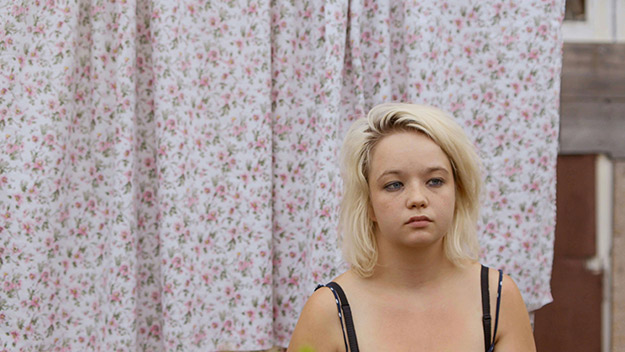
Both Nana and Milla take place within a rich, sensory natural world. And in both films, characters disappear—in various ways—into nature. Why this emphasis on nature?
Because it’s the beginning of it all for me. Maybe one day I’ll make a film in a city, but I have doubts about that, because it’s too ugly. Cars are ugly. Everything’s ugly. Nature is very important to me because it puts people back where they belong. There are no modern objects in my film, and that’s because they’re ugly, but also because instead of being tools, which is their function, they become the enslavers. I think it’s very healthy sometimes to just disconnect completely.
And nature is an extremely important character in my films. It’s not a sweet, comfortable, postcard-pretty thing. It takes people away. [My films] always start with a place. I shot Nana where my mother lives because I know the land really well. I know every tree, every cow. I wanted the same wilderness [in Milla], but with the ocean, with the sea. And so I traveled through the North Coast with my mother in a car, and I found this place.
So you just stumbled upon the location for Milla?
No, it’s a long story. While I was writing the film, a friend told me about the collage of Jacques Prévert. I went home and started looking at it, and I didn’t like it. I like his poetry, but I didn’t like the collage. But I started reading about it, and I saw that he is buried with a man called Alexandre Trauner. Trauner was a famous production designer. He worked with everybody. He’s one of my heroes. He was Jewish-Hungarian, and during the war, Prévert helped hide him and his wife. And when the war was over, Trauner and his wife got a house in this village in the north, and then Prévert came and built a house there as well. Both their families are buried in the cemetery there. And I’m thinking, these two men spent the last 15 years of their lives in this village? I want to go see it. So I did. And all the sea shots in the film, like when [Séverine] is pregnant and sitting alone on the wall in front of the ocean? That’s where they’re buried.
Speaking of production design, your sets feel very organic and lived in, but they’re also organized according to certain motifs and symmetries. In the first part of the film, for example, there are a lot of reds and blues. What’s your approach to set design?
I don’t think! [Laughs] How I work is, I write a script, but it’s for financing. I never open it. And the script for Milla is completely different from the film. There’s no love story there. It’s just this girl running away, and then she ends up in a hotel in the middle of nowhere by the ocean, where this older woman takes her under her wing. There’s a parallel between their solitudes, and then there’s the child. That’s all. But then I met Luc, and changed everything. It’s always changing for me, until I get to the editing part. The essence doesn’t change, but the story’s always changing.
Because I don’t work with fixed sequences, I spend a lot of time looking for places, going over the location. I get to know these spaces very well, because I find them and fall in love with them. Then I get all my toys, meaning all the objects that are in the film, and they’re there in the room. So it’s never like oh, we can’t shoot this right now because we don’t have the candles or something. I have everything there, and then we play. I add things, and I know there are two or three places where the camera can be, and here I want something that blocks the frame… I understand things when I make them. I’m more manual than intellectual.
A friend of mine saw Milla and she said it’s weird, because it’s very different from Nana but there are a lot of ghosts [of Nana]. The colors, the flowery sheets. They’re not the same, but they’re the same. And color-wise, yes, you said it. The first part with Luc it’s more golden red, and then it goes into blue. There are more flashy colours in the part with the hotel, where there’s no dialogue and it’s kind of sad. And then you go back to life, and the color goes back to red.
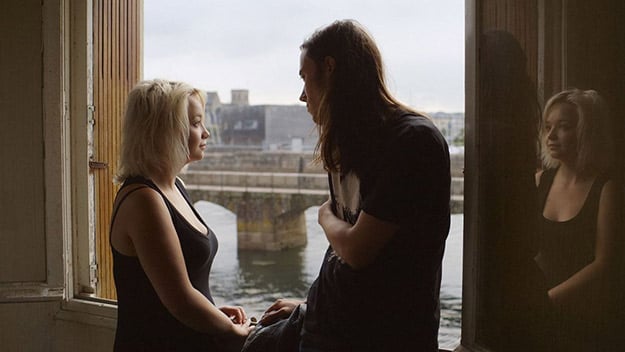
In both your films, tragedy is treated without any sentimentality. It’s a non-event. The film just keeps moving on past it, which I found very affirming to watch. Why is that?
Because I make films with women, and I think women are the most resilient beings on planet Earth. Because of the history of women. Even if it’s different in different cultures, the bottom line is they’re always in the shadow and so they develop this resilience. They fall down and are crushed and then they get back up and keep on. That’s how they function.
Personally, I have no problem with the expression of emotion, but I have a problem with sentimentalism, which I find a little obscene. When I watch a film and I already know I’m supposed to cry there because of the violin that comes in, that pisses me off. It’s like an insult to my intelligence. The respect that I have for the people I film, I also have for the people who’re going to watch it. They’re not idiots, they have a heart and brain and they can feel things by themselves. I don’t need to restrain what they look at and listen to and drive them.
I remember when I showed Nana in the village, this girl came and asked, can I watch the film again? And I said no, it was just for us. It was between these two Kung Fu Panda screenings, and the owner gave us the cinema for free. I asked her, why do you want to see it again? And she said, normally when you go see a film, you have someone on your shoulder saying now you look at this, now you cry, now you do this… but watching your film, I could just be me. I turned to my mother and said, okay, I can die now. [Laughs] It’s also related to the fact that I don’t want certain objects in the film and I want nature. It’s not like a baba cool hippie thing at all, I’m a punk head. I just think it’s very important to have this relation to instinct.
I was thinking of Chantal Akerman while watching Milla. In a film like Jeanne Dielman…, duration feels oppressive on a woman. It signifies the constricting weight of domesticity and routine. But in your film, the extended duration and rigid framing feels liberating.
That’s what Jeanne Dielman is about. She [Akerman] cuts heads, for example, there are a lot of shots with only parts of the body and the film is super claustrophobic. The woman is in jail, that’s the point of the film. The point of Milla is the opposite. At the beginning, she giggles and laughs because she’s a teenager. Sometimes she’s the focus, sometimes she’s not. She’s not so present at the beginning, but then little by little, she opens up, she grows. And it’s liberating to grow.
I was recently asked in Paris to screen a film, and I chose Akerman’s From the East, which to me is like… wow. And talk about duration… that film has the same kind of rhythm, but there are moments of breathing and laughing and it’s really beautiful. So it depends, it’s a combination of things.
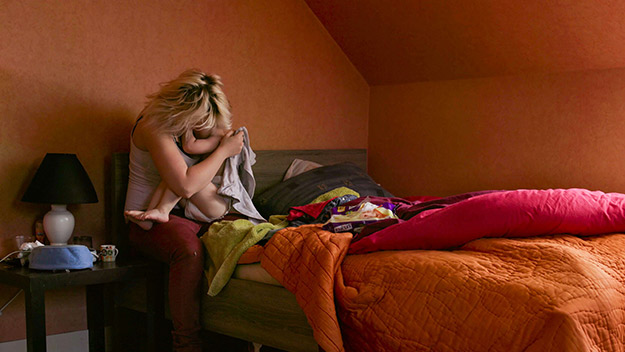
Why is duration so important to you?
Because I live in a world I cannot stand. It’s a resistance, because I cannot watch 90 percent of the films that produced. For me, if a shot is 7 seconds, I don’t have time to see shit. Why’re you asking me to look at something I don’t have time to look at? I think it takes me for an idiot and it’s insulting to me. If I go to a film and I’m asked to sit down for an hour or two, give me some space. I’m not a carrot. I’m not an empty vessel. I’m a person.
I remember this man said, oh, you didn’t show the death and so we didn’t really know. And I said, so you wanted a floating body in the ocean? Sorry, I can’t. There’s the fishing, then there’s alarm, then the shots get closer, and then there’s the moving sea, and then there’s complete silence. Then a guy brings back the bag, and then there’s the poem. And the man goes, well, if you put it like that… I said I’m not putting it like that, it is like that. He said, oh, but then you have to be really attentive. I said, why do you go to see a film if you’re not? I mean we’re talking like a minute and 20 seconds, you know. That’s the average length of a shot in the film. What’s a minute and 20 seconds?
Also, when you make a film, you try to be honest to yourself, and that’s my honest relation to time. I can sit in a cafe for hours and watch a woman sitting across and talking to her child or watch the body language of two lovers. This feeds me. It makes the world breathable.
Does your predilection for static framing and meticulous composition come from your background in photography?
Probably, but it also comes from the fact that I don’t give them lines. It’s like giving them a little theater in a way, and they can always leave. But they kind of know the frame, and they have all their toys in there. I think it’s the same as my relation to duration. When I edit, I watch the rushes like you have no idea. That’s why I didn’t find an editor who wants to work with me, because I watch them so many times that they can’t take it. Why I do this is because, in every sequence, every shot, whether you focus on him or her or the curtain or the shadow on the wall… everything is carrying the same emotion. It doesn’t change, no matter where your eyes go. It will not change the emotion of the sequence. You’re there, you’re sitting down, and this is how I watch the world. I’m giving it to you. And I completely understand that I lose people, but bottom line is I don’t want to talk to these people anyway. They wouldn’t be my friends. [Laughs]
Poetry is a recurring theme in your films. There’s a scene in Milla where Leo directly addresses the camera and recites a poem about Milla. How do you see these poetic interludes interacting with the otherwise naturalistic style of your film?
Because for me it’s not naturalistic. For me it always takes place between realism and oneirism. Especially in Milla, I use ellipses and time-jumps a lot. I think poetry is the most political act of resistance to the world to me. Whether it’s written poetry or a sense of poeticism. Because we’ve become really dry and everybody is craving for it. Anytime on the planet if you see an act of kindness, people are moved like [gasps]! They go crazy, because they’re craving kindness. I just watched Jean Epstein’s Finis Terrae, from 1929, and I was crying. I saw it with three filmmaker friends who were like, why are you crying? And I said I’m crying because it’s incredibly beautiful. We make so many films about bullshit and pain and hatred… which are important. They’re political films and are super important. But this is a film about goodness. I mean, take Chaplin. You show Chaplin anywhere, in the mountains of Kerala or in Cuba, and people see the same thing. They feel it like an embrace. Poetry is like that, it’s something that embraces and heals you. Like watching the ocean or walking in the forest.
The poem that both Leo and Milla recite after Leo’s death—“The Tempest”— how did you find that and why did you choose to include that scene?
That poet is incredible. Her name is Marie Ravenel. She was born in 1811, and she’s from there. In the first shot of the film, where Milla and Leo are sleeping in the car? Right next to them, there’s a statue of her. She was the child of peasants and she could read and write by the time she was seven. She was so gifted that the people of the village put together some money to send her to school. All her life she worked on the farm, grinding wheat, but she wrote one big book of poetry. It was really complicated to find, but I have it. And I just wanted a poem about wreckage. Since she’s from there, there’s plenty.
My first idea was to have Milla read that poem as a response to Leo’s letter. But Séverine couldn’t manage to learn it, so I asked Luc to help her. They were doing that in the room, and their mics were still on because I was doing something else and forgot about it. And I started hearing them in my headphones. Séverine was sitting on the bed and Luc was moving around so his voice was a little further. He had of course learned the thing in two minutes, so her voice was running after his, and then sometimes it was the opposite. And I was like… oh my God, this is incredible. So that’s how we recorded it. We recorded them together, so that sometimes she’s before him, sometimes she’s after him.
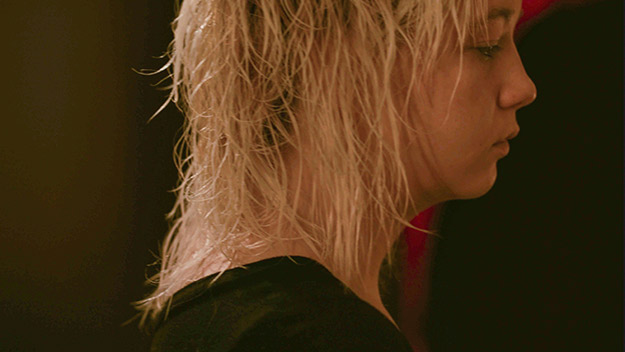
I wanted to ask you about the musical performance that happens in the hallway of the hotel where Séverine works. It’s the most obvious rupture in the film’s reality. What’s the function of that sequence?
Sequences do not have functions, my dear [laughs and pats me]. That song [“Add It Up” by the Violent Femmes] comes three times in the film. At the beginning, when Leo’s dancing on the bed, then the performance, and then when Milla is listening to it through headphones. Basically, I wanted a punk hymn from teenagehood. I wanted a song that carried that anger, and melancholy, and love. The idea behind having it in the three parts of the film was that we all have that song we cannot listen to because it’s attached to something really emotional. And there, in the hotel, it’s like this omnipresence of this absence. It’s Milla’s rage and frustration. You could see it as a mental image of her rage and frustration.
Yeah, it’s so discordant that it feels like an eruption of sorts.
We did three takes. Valentine, who’s the singer, is very pretty and she sings very well, but I was bored. I told her, we’ll do a last take, and trust me, everything’s great and you sing beautifully, but I want you to get mad. She was wearing these heels on the carpet, which has hard, so she asked if she could take off her shoes. And I said no. That would be too easy. If you’re barefoot, you can run around, be crazy and angry. It shouldn’t be easy because frustration and anger are not easy things. So she did it, and it was incredible. In the beginning, it’s just like… what the fuck is this? She’s clumsy, she’s screaming. But then it grows in a beautiful way, and you get it. And if you don’t, then I don’t want to talk to you. [Laughs]
Your son, Mel Massadian, was the cinematographer on the film. What was it like for you both to film a mother-son story together? Did your personal relationship inflect the film in any way?
Well, the personal part is that I know what it’s like to have a kid really young. But I think that had an impact on my relation to Séverine more than anything else, because she knew she couldn’t bullshit me. And also, she knew that I knew, and that created a trust that I was not going to betray or mock her. I would care for her.
With Mel, we’ve made other things together before, and it was really great. He’s not as good a DP as me [laughs]. No, no, he’s really good. I raised him by myself really young and he always did things with me. He’s super talented, you know, apart from the fact that he’s my son. And so it was super easy, because his sense of framing is very similar to mine, very sensual. My nickname on set was “a little lower to the left,” because he would frame the shot and I would say “ a little lower to the left.”
I didn’t ask him to work with me because he was my son, I asked him because he’s good. But it was also really beautiful to share this experience with him. Sometimes it would get personal, though, and he would look at me while we were filming and be like, is this what it’s like to have a kid? I’m sorry mum, was I like this? [Laughs]
You’ve worked with really young children in both of your films. How do you get them to be so free in front of the camera?
Because that’s the relation I have with children. Nana was my first film. I hadn’t made anything before that. When I told people I was going to make a film with a four-year-old, they all looked at me like, are you fucking crazy? But I knew and I really trusted this. I’ve thought about it, and I probably did it so that people would leave me alone. I was like, listen, I’m working with a child. It’s really complicated. Let me have silence. I need nobody on the set, I just need to be alone. It was also a way to protect myself at the time.
For me, children are just little people. Little humans. We take them for stupid. But when you treat them with respect, as autonomous beings… they have this strength. And I’m not asking them anything, I’m just playing with them. It’s the same thing I do with adults, but it works much better with children. Take the sequence where he’s reading a book in bed. The book is about people of color, and because I have no idea what a two-year-old might think or say about this, I gave him the book. But he doesn’t give a shit about that, he’s suddenly focused on Mommy and Daddy. I never asked him to, you don’t ask a two-year-old to talk about his real father who’s actually dead. But he decides he wants to talk about it. And he’s really talking to us. He’s talking either to me, or to Aline [Huber] who’s holding the boom. It’s not a director thing. It’s like a dance, it’s like music, we jam with each other.
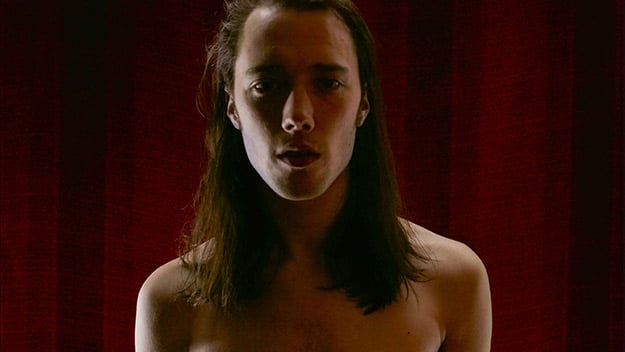
What are you working on next?
The plan is to work with five or six kids between 11 and 13. It will be about all those things that happen at that age—bodily changes, desire, sex—but in a modest way. And there’s a narration, but… there’s no point in telling you this because it’s going to be completely different. [laughs]. I just have to find the kids. The places I already know. And there’ll be one adult, and it’s going to be hard for her.
Why’s that?
Okay, I’ll give you the pitch. This capitalist, horrible world went all the way to destruction, and the only people resisting them are the kids and the teenagers. So they become the enemy of every government, and are hunted, and put in detention camps, blah blah… All of this you will not see. You’ll understand it when they talk to each other. The film starts with a huge explosion, and we don’t know who the survivors are. All these children will end up in this castle in the middle of the forest. There’s not much in the house, except for a huge library that has everything. And they have to reinvent the world. They have to write the constitution, figure out the rules.
Like Lord of the Flies, a little bit?
Yeah, but much better. [Laughs] And while they’re out scavenging, they find this woman, this adult, who’s very sick. And they don’t know if they want to save her… So, really, it’ll be about working with the kids and talking to them and showing them lots of political films from the ’60s.
Like what?
I don’t know… I’m not telling you everything! [Laughs]
Devika Girish is a freelance film critic based in New York.



